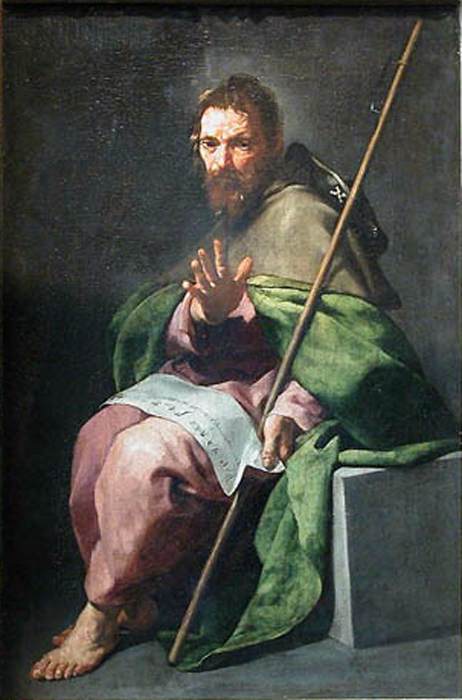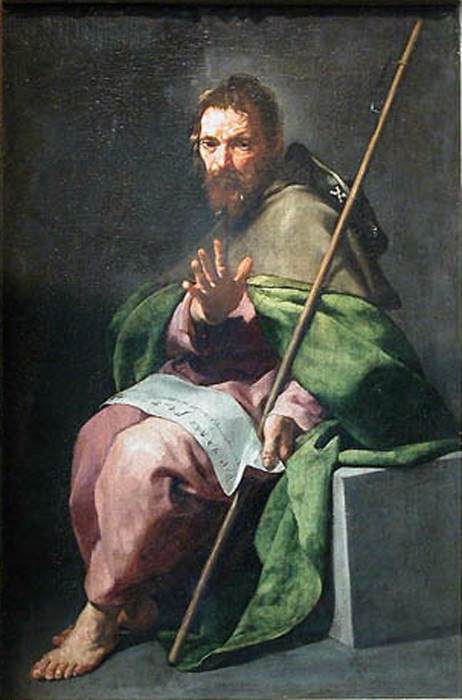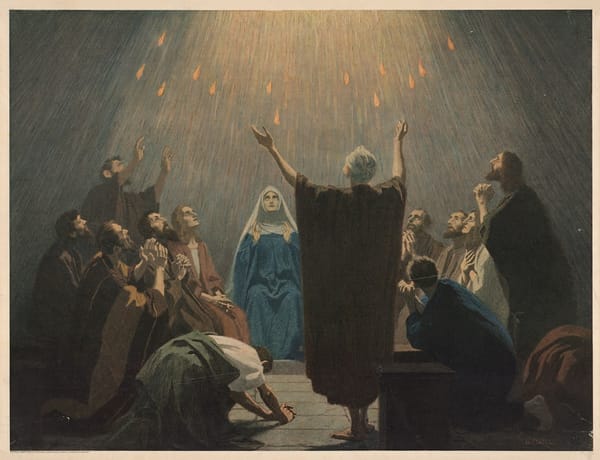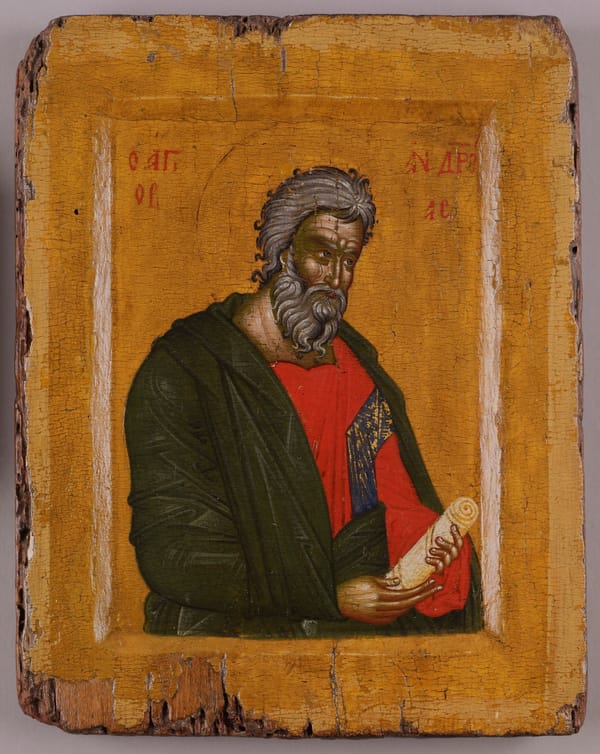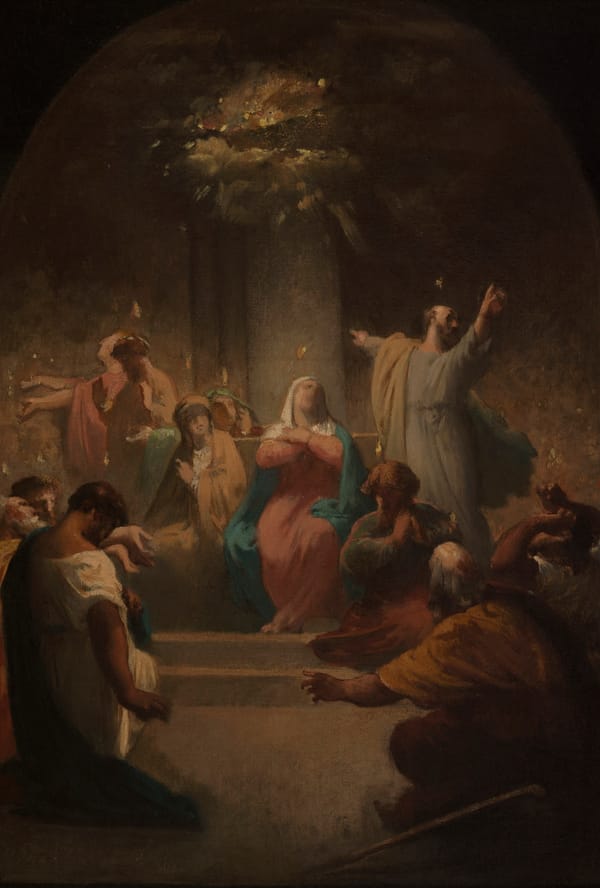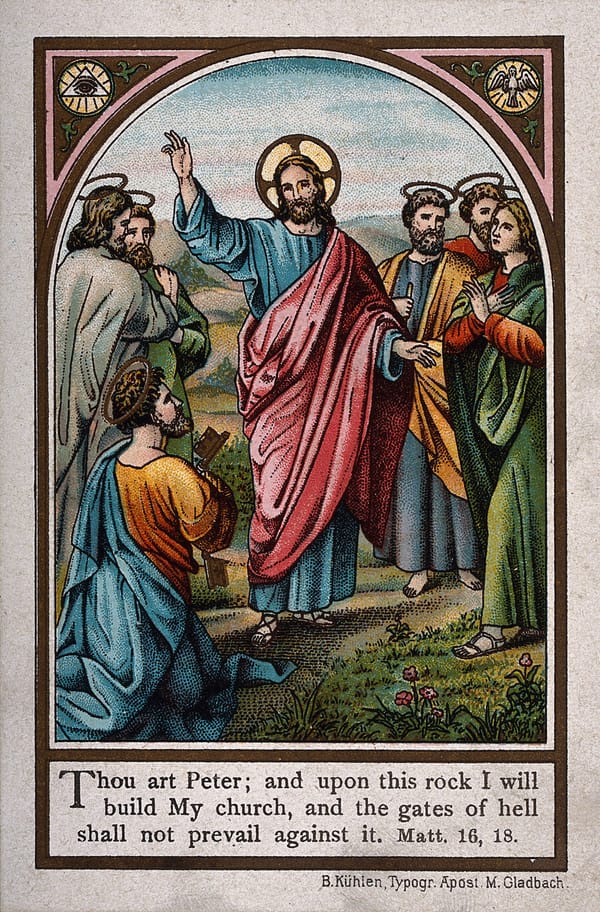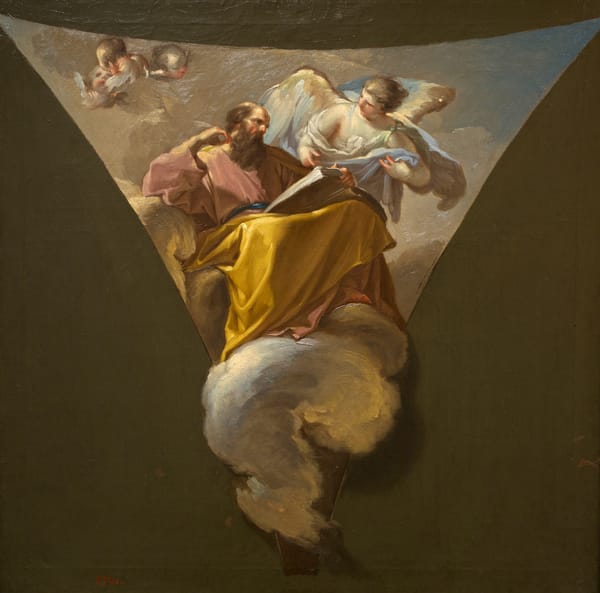About the Image:
Ah, "St James the Greater" by Alonso Cano from 1635. Let's delve into this striking piece:
Artist Background:
Alonso Cano (1601-1667) was an Andalusian painter, architect, and sculptor, making him a rare master of the three major arts of his time. He is particularly known for his work in the Baroque style, and his religious subjects are deeply rooted in emotion and spirituality.
Composition and Technique:
- Color Palette: Cano's use of deep and muted tones for the background contrasts dramatically with the vivid colors of St James's attire, which immediately draws the viewer's attention.
- Lighting: The chiaroscuro technique (the play of light and dark) is evident here. The strong light source illuminates the right side of St James, emphasizing his facial expression, drapery, and the script he holds. This dramatic contrast between light and shadow adds depth and dimension, characteristic of the Baroque period.
- St James's Pose: His contemplative expression, paired with his raised hand, could suggest a moment of divine revelation or deep introspection. The gesture is both protective and inquisitive, perhaps indicative of his role as an apostle spreading the teachings of Jesus.
- Attributes: St James is traditionally depicted with a pilgrim's staff, indicative of his missionary journeys and also his association with the Camino de Santiago pilgrimage in Spain. The script he holds could represent his contribution to the New Testament or the spreading of Christian teachings.
Historical Context:
St James, also known as Santiago, holds particular importance in Spain. He is considered the patron saint of Spain, and the Camino de Santiago, a network of pilgrimage routes, culminates at the Santiago de Compostela Cathedral where he is believed to be buried.
Overall:
This painting exemplifies Cano's ability to merge the emotional intensity typical of the Baroque era with traditional religious iconography. The evocative pose and dramatic lighting draw the viewer into a moment of spiritual significance, reflective of St James's importance both biblically and within the cultural context of Spain.
